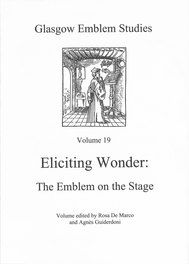
The Emblem on the Stage
Qu’il s’agisse d’un symbole rhétorique du pouvoir ou d’un support de messages politiques et religieux, l’ornement éphémère tient, au début de la période moderne, un rôle crucial. Mais à l’aune des expériences immersives visées par les cérémonies et festivités de l’époque, ces emblèmes suscitaient-ils réellement chez le public l’engouement recherché ? Comment captivaient-ils l’attention du public ? Faisaient-ils partie d’une performance ?
En se basant sur des études de cas provenant des quatre coins de l’Europe, ce livre propose un aperçu de l’attrait irrésistible des emblèmes et de leur rôle dans l’ornementation fastueuse de la machinerie de fête.
Table of Contents
Rosa De Marco and Agnès Guiderdoni - Introduction
MULTIMEDIALITY OF THE EPHEMERAL EMBLEM
Anna Maria Testaverde - An Emblem for War and Spectacle : the Grenade at the Court of Urbino between the Fifteenth and Seventeenth Centuries
Kateřina Dolejši - 'Painted poems': Form and Function of Emblems in School Ceremonies and Festivities prepared by Jesuits in Olomouc (1597-1742)
Jolanta Rzegocka - Performance Toolkit: Emblems, Symbolic Images and Devices on the Polish-Lithuanian Jesuit Stage (1564-1773)
Zuzana Dzurňáková - The Emblematic Stage in the Church of St John the Baptist in Trnava
EMOTIONAL SCALE ON EMBLEMATIC STAGES : FROM THE MONUMENTAL TO THE DETAIL
Víctor Mínguez - Emblematic Naples : Symbolic Culture and Festive Hieroglyphs for the Hispanic Monarchy at a Viceregal Court
Filipa Araújo Medeiros - 'The world is not enough': Emblematic Representations of the Four Continents in Portuguese Royal Festivals
Inmaculada Rodríguez Moya - Nuptial Jeroglíficos for the Ceremonial Entries of Spanish Queens
Peter Megyeši - Emblems in Liturgy: Bosch's Symbolographia and Picinelli's Mundus Symbolicus applied in Goldsmith Works by Johannes Szilassy (1704-1782)
Acknowledgements